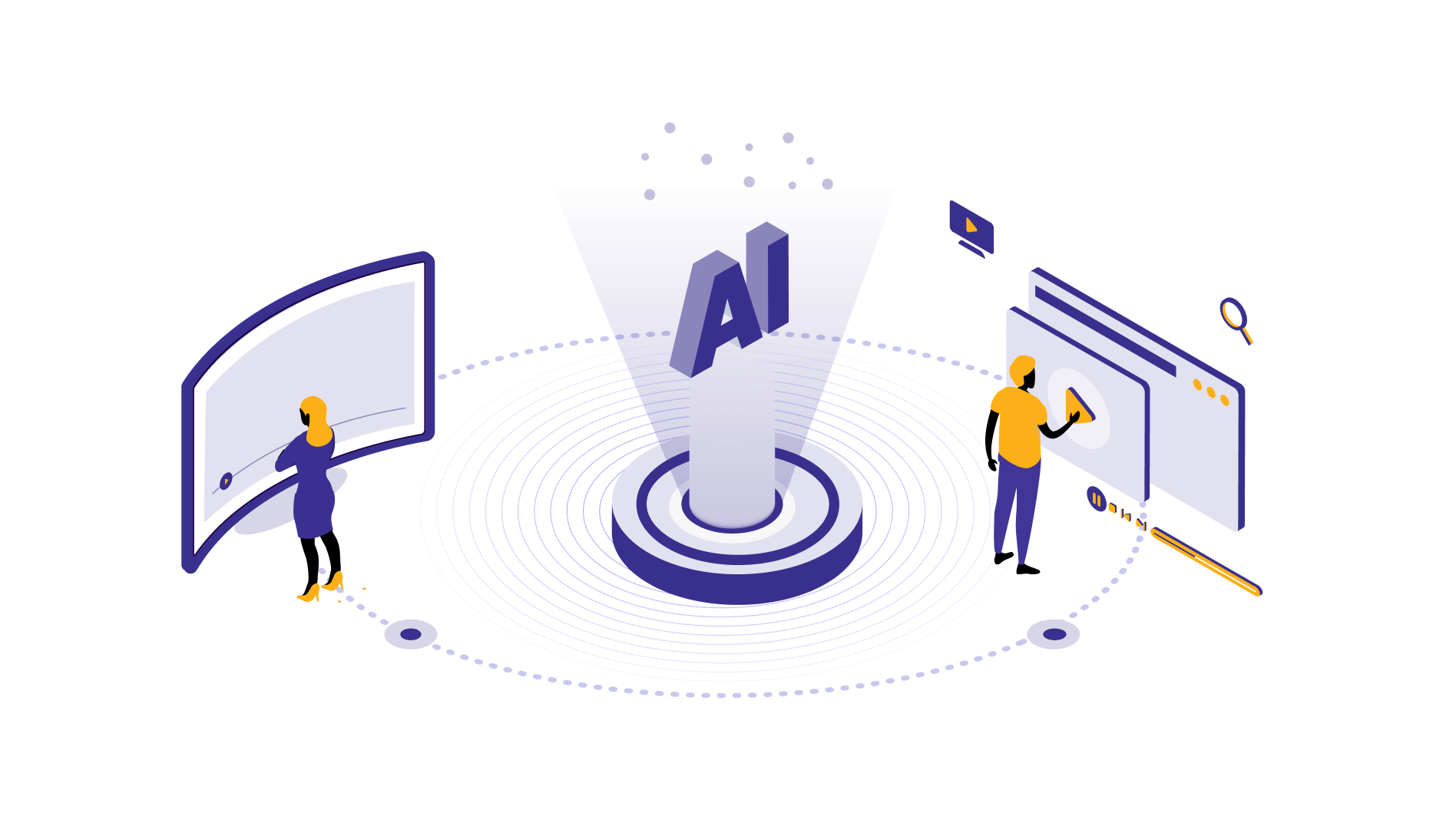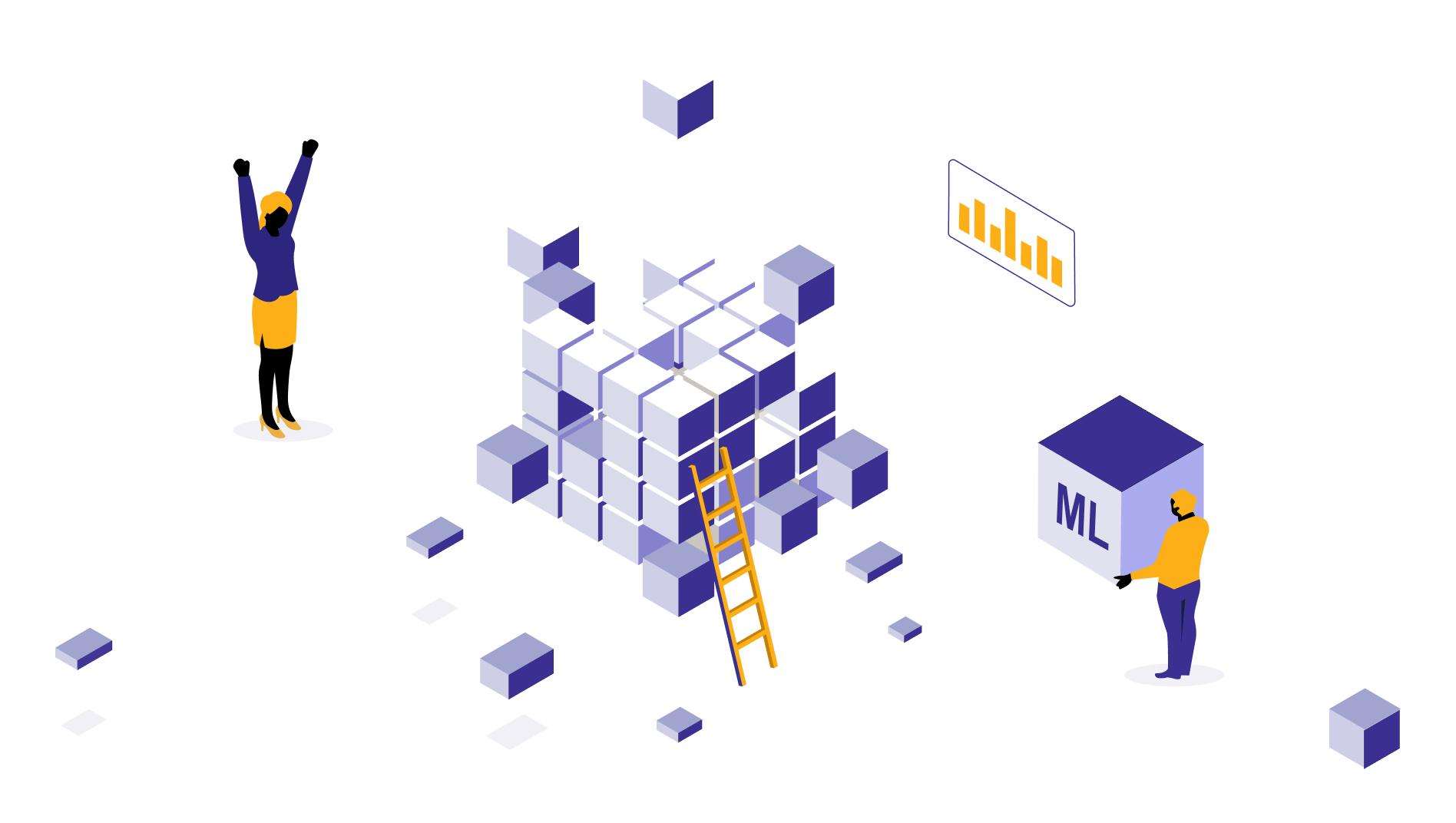AI use cases for the media industry
From telling you ‘what’s to watch’ to translating your favorite international show, AI is pretty much everywhere as one of the behind-the-scenes crew. The article features some AI use cases of media that stole the limelight and found its sweet spot in an industry that breathes creativity.

Thulasi
Dec 11, 2025 |
6 mins

AI in media and entertainment
Entertainment is a blanket term that houses traditional television, FMs, film industry, OTT & streaming services, advertising, and lots alike. While the above-mentioned fields have adopted AI in some ways, there are some use cases that stood out—being most relevant, excelling user expectations— from the case of how Spotify Wrapped works to personalized advertising to digital avatars.

Personalized ads
Have you ever thought of buying something and saw its digital ad moments later? That’s personalized advertising, where AI plays a role in curating ads for customers who are likely to buy. AI could do this by analyzing tons of demographic and behavioral data, segmenting profiles based on shared traits, and targeting them with the most relevant product and ad version.
Spotify applies the same, delivering tailor-made ads based on listeners’ account data, song preferences, and listening habits. Likewise, social media platforms like Instagram and Facebook targeting works, facilitating successful ad campaigns across industries with high impressions and conversions.
AI is also effective in real-time bidding and optimizing ad placements, so it attracts the right audience’s attention.
Content recommendations
Netflix will be the first thing anyone thinks of when they hear recommended media content. Not only them, many OTT, music streaming, and news platforms recommend preferred content to users based on what they are likely to binge on.
In fact, these suggestions go beyond categories you select while you set up the account. How do they do it accurately? ML, deep learning, and neural networks, along with big data, go beyond and work the following way.
Filtering based on content you previously watched, liked, or engaged with, a technique that goes by the name, content-based filtering.
Filtering and suggesting content based on people with similar preferences to watch or engage with. - collaborative filtering.
Or using a hybrid recommender works on a combination of the both above - using both content and user characteristics to suggest ‘preferred shows and movies’.
These systems learn and evolve, obtaining inputs from users.
Some platforms, Netflix for one, take hyper personalization up a notch by even including data like search terms, watch/scroll behavior, likes, super-likes, what people in your vicinity tune to, etc.
YouTube also works the similar way - bringing to you videos out of billions based on likes, watch time, shares, search history, feedback, what's trending, etc.
This is how AI finds its place in recommendation engines, reducing hours we spend trying to find the right content.
Digital avatars
Firstly, we had AI avatars as Instagram and TikTok influencers like lilmiquela, sharing content and videos just like humans.
Then we had TikTok introducing custom avatars for businesses to advertise and promote their brands across regions, with custom language, accent, and localized content. And, now we see AI-powered digital creator companies like Synthesia with tons of custom avatars for almost every purpose. From learning videos to advertising to gaming to customer service, these avatars are gaining traction everywhere. These avatars with their own name, personality traits, and looks can interact with you or convert text into audio.
Other than custom avatars, there can be virtual avatars representing a real person too, particularly popular in media and entertainment. Remember the H&M recycle campaign that featured digital avatars of Maisie Williams? These avatars help brands incorporate and personalize branding to suit different locations and create digital commercials faster.
Artificial intelligence helps create these virtual characters. A combination of 3d animation, Natural Language Processing, conversational AI, and deep learning algorithms go behind the scenes. These technologies help avatars mimic human-like expressions while speaking, understand what the viewer says, and respond with the right answer.
Automatic subtitle in seconds
Close captions and subtitles are everywhere - from news channels to YouTube videos to international shows on OTTs. Frankly, it can be quite exhausting to perform this manually. But with AI in media, it’s possible to create subtitles in multiple languages concurrently. AI technologies like automatic speech recognition, speech-to-text algorithms, NLP, and time synchronization to convert audio into subtitle texts. AI-enabled subtitle creators come with speaker diarization too to identify different speakers and align text properly.
In terms of accuracy, AI-based subtitle generators are improving a lot with 90 to 98% accuracy.
Also, you could include the localization aspect too, familiarizing the model with a local culture to avoid inappropriate and insensitive elements.
Many TV channels are already using real-time subtitle generation with AI. One example is GB News, a London based news platform with 24/7 subtitles availability.
Platforms like Netflix and Amazon Prime go a step further, using AI to sync subtitles with the right time sequence. Earlier, these processes required a multi-lingual subtitle person to watch the entire show and drift correct them. Now, they have a drift correction voice activity detection system that matches the time frame of an audio with its respective subtitle, despite the language used.
Learn more: AI for decision making
Audience feedback analysis
From mainstream media to social platforms, sentiment analysis is used everywhere, conveying the pulse of audience to creators. A few years ago, the Barbie movie crew used AI sentiment analysis to look into what their audience says about the movie - the good, bad, and worse parts. This means scraping all forums, social media content and their engagement, and any other digital impression and UGC. Techniques like NLP and ML algorithms are used here to understand and summarize strings of text into digestible feedback.
Scraped, normalized, and labeled feedback are classified based on their polarity and intensity.
The final outcome helps creators understand their audience's reaction and incorporate their feedback into upcoming shows.
Compared to the manual feedback collection process, AI-based analysis is less tedious and more accurate. The team could see how different demographics, age groups, or genders react to their creation and address potential issues that could salvage their reputation.
Learn more: How is AI used in sports
AR and VR
Be it gaming experiences or virtual events or crazy movie campaigns, Augmented Reality and Virtual Reality help fuse the physical world into the digital world.
While AR and VR aren’t exactly the subsets of AI, they are laced with AI to make the immersive, out-of-world experiences better.
Here is how AR and VR use AI.
To recognize human interactions or track objects - like how you could control a VR game with hand gestures.
To filter and personalize content or suggestions for you, based on your preferences, likes, dislikes, and more.
To understand natural language input and help virtual characters engage back.
You could find many real-life AR and VR applications in the advertising industry. These commercials merge the gap between reality and imagination, allowing users to interact with products creatively. For example, customers could simply scan a product and watch its characters live in action. Or invite them to their fancy, virtual world through VR lenses for an enthralling, gamified experience - something similar to the virtual gaming world that Gucci which got people talking. You could play games, meet like-minded people, explore Gucci new launches. Options are endless. That’s how the entertainment and advertising industry is leveraging AI to make the impossible possible.
Multi-language translation
AI could also dub and translate content into different languages for diverse audiences to enjoy. There are platforms like Wave.ai being used by movie panels and OTT platforms for a less labor-intensive dubbing process and quick turnaround. AI dubbing involves techniques like NLP and ML algorithms, automatic speech recognition and synthesizers, and deep learning. Within a short time, the team can dub the entire movie with synthetic voices, taking into account cultural and language nuances.
Even with all these benefits, AI-based translation comes with its own issues, too. To name a few higher costs, not being able to replicate the subtle efforts of voice artists, ethical issues, poorly synced audio, and more. It ultimately relies on the effectiveness of the tools and tech team behind to mirror a near-accurate representation of the content through indigenous voices and transliteration.
Learn more: AI in risk management
Conclusion
There are tons of discussions about how AI can be a menace to the creativity of the media & entertainment industry. Yet, the show must go on. With the wide number of platforms available to reach the audience, creators and channels must automate as many tasks as they can. And for that purpose, AI business strategy could be a potential tool for media companies, just like other applications they use. It seems like yesterday when artists were reading hand-written scripts and before we could blink; we are here - with technologies like AI and VR taking place. With the rise in AI use cases in media, the transition is almost seamless. From here, it’s going to be a journey of more inclusive entertainment without barriers like language.
Unlock smarter media strategies using our expert machine learning solutions.



